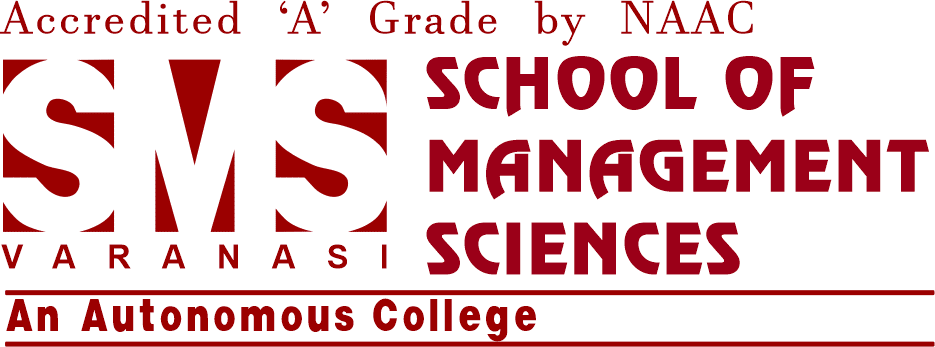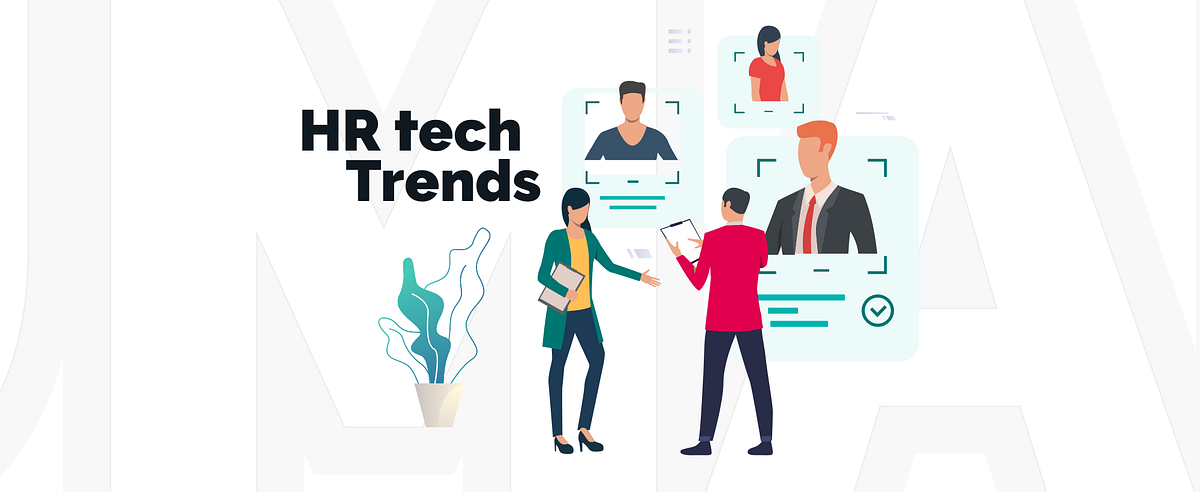
In the dynamic landscape of modern business, technology and human resources (HR) are entwined in a dance of continuous evolution. From AI-powered recruitment to data-driven decision-making, technology is reshaping the way HR departments operate. Students pursuing BBA, MBA, BCA, or MCA degrees at SMS Varanasi are advised to keep pace with the latest HR tech trends as a key to future career success in India and abroad.
Understanding how artificial intelligence (AI in HR) optimises talent acquisition or the way employee engagement platforms build a connected workforce, will set you apart in the job market. The ability to leverage HR analytics for informed insights will make you an indispensable asset to organisations. Similarly, with remote work tech on the rise, familiarity with collaborative tools signifies adaptability in a fast-changing business world.
Staying abreast of these HR tech trends directly empowers you to carve out a fulfilling, impactful trajectory within the exciting realm of HR careers.
AI in HR: Revolutionising Recruitment and Beyond

Artificial Intelligence (AI) is rapidly transforming how HR departments discover, develop, and manage talent. Let’s explore how it’s reshaping key HR functions:
1. Streamlining the Hiring Process
- Resume Screening: AI algorithms can analyse vast numbers of CVs, identifying candidates whose skills and experience best match open positions. This saves recruiters time and reduces the chance of overlooking qualified individuals.
- Automated Interviews: AI-powered chatbots or video interview platforms can conduct initial screenings, asking standardised questions and assessing candidate responses. This streamlines the early stages of the hiring process.
2. Personalising Employee Development
- Tailored Learning Paths: AI analyses employee data – job performance, past training, and skills gaps – to recommend personalised learning plans. This empowers employees to take ownership of their development.
- Adaptive Learning: AI-driven systems adjust training content and difficulty in real time based on a learner’s progress. This ensures knowledge is absorbed effectively and maximises engagement.
3. Promoting Diversity and Inclusion
- Mitigating Bias: AI algorithms can flag potentially biased language in job descriptions, helping attract a more diverse applicant pool.
- Blind Resume Review: AI tools can mask demographic information (name, gender, etc.), promoting fairer assessment based on skills and merit.
Understanding AI in HR isn’t just useful – it’s essential for management and IT students. AI tools don’t replace HR professionals; they assist them to be more efficient and effective. The future of HR involves strategising AI implementation, analysing the data it generates (HR analytics), and ensuring its ethical and responsible use.
AI is a powerful tool in the HR toolkit, allowing for greater efficiency, personalisation, and a more equitable workplace.
Employee Engagement in the Digital Age
Employee engagement – the level of connection, motivation, and commitment employees feel towards their work – is a cornerstone of a successful organisation. In an age where remote and hybrid work is increasingly common, technology plays a pivotal role in fostering engagement.
1. Tech Tools for Connection
- Collaboration Platforms: Tools like Slack or Microsoft Teams offer dedicated spaces for teams (and the whole company) to communicate, share updates, and collaborate on projects. These become virtual offices, fostering a sense of belonging even when geographically distant.
- Video Conferencing: Regular face-to-face meetings, even virtually, build stronger bonds than text-based communication alone. Encourage teams to schedule virtual coffee chats or social events for informal interaction.
- Employee Recognition Platforms: Public recognition tools allow colleagues to praise each other, highlighting contributions and boosting morale. This builds a culture of appreciation even in remote work tech environments.
2. Gamification: Making Learning Fun
- Onboarding Quests: Transform new-hire training into an interactive journey with points, badges, and leaderboards, making the learning process more engaging.
- Training Simulations: Gamified scenarios allow employees to practice skills in a safe environment. This is particularly useful for technical training.
3. Pulse Surveys and Feedback Platforms
- Quick Feedback: Short, frequent ‘pulse surveys’ gauge employee sentiment on specific topics (project feedback, new policy reactions). They signal that employee voices matter.
- Open Feedback Channels: Anonymous feedback platforms encourage honest input from employees. This data is HR analytics gold – revealing areas for improvement and potential issues.
For BBA and MBA students interested in HR careers, understanding how technology fosters engagement is crucial. Engaged employees are more productive, loyal, and likely to recommend their workplace to others. The ability to select and deploy the right tools is a true asset for any HR professional.
Remember, it’s not just about the tech – it’s about using it strategically to nurture a sense of community, provide growth opportunities, and genuinely listen to your workforce.
HR Analytics: The Power of Data-Driven Decisions

HR Analytics is the practice of collecting, analysing, and interpreting HR-related data to inform decision-making. In a world awash with data, HR departments can no longer rely on gut feelings alone. HR analytics unlocks the power of evidence-based HR.
Benefits of HR Analytics
- Predicting Turnover: By analysing factors like employee engagement survey results, performance data, and compensation levels, HR analytics can help identify employees at risk of leaving. This allows for proactive retention strategies.
- Optimising Workforce Planning: Data on hiring trends, upcoming projects, and skills gaps informs strategic workforce planning. This ensures having the right people, in the right roles, at the right time.
- Improving Recruitment: Analytics track which channels yield the best hires (time-to-hire), the quality of those hires, and the overall cost (cost per hire). These insights streamline recruitment processes.
Key HR Metrics
- Retention rate: Percentage of employees staying over a set period.
- Time-to-hire: Time it takes to fill an open position.
- Cost per hire: Total costs associated with a new hire.
- Absenteeism rate: Track overall absences and identify patterns.
- Employee satisfaction: Sourced from engagement surveys.
Data Visualisation Tools
- Spreadsheets: Good for beginners (Excel, Google Sheets). BBA and BCA students likely already have some exposure.
- HR Analytics Dashboards: Specialised HR software, such as SAP SuccessFactors, Oracle HCM Cloud, Visier and Lattice, often offer intuitive visualisations.
- Data Visualisation Tools: Tableau and Power BI offer advanced data storytelling features. Understanding these is an HR career asset.
HR professionals who can leverage HR analytics hold a significant advantage. Data fluency is a must in this field. Analysing data isn’t just about number crunching, it’s about identifying trends, uncovering the root causes behind HR issues, and recommending solutions.
Remote Work Tech: Enabling Collaboration and Productivity

Alt: HR tech trends related to remote work culture
The rise of remote work has made technology an indispensable partner for distributed teams. Let’s explore essential tools, how tech addresses remote work challenges, and the HR role in optimising this new work paradigm.
Essential Tools for Remote Work
- Video Conferencing: Platforms like Zoom or Microsoft Teams facilitate face-to-face meetings, which is crucial for building rapport when in-person meetings aren’t possible.
- Project Management Software: Tools like Asana or Trello centralise tasks, track progress, and ensure teams are aligned on goals.
- Secure Cloud Storage: Dropbox, Google Drive, etc., allow seamless file sharing and real-time collaboration regardless of location.
- Instant Messaging: Slack or similar tools offer quick communication channels, replacing those “pop by the desk” moments in an office.
Challenges of Remote Work and Tech-Based Solutions
- Isolation & Loneliness: Regular video calls, virtual social events (employee engagement tools!), and dedicated ‘water cooler’ chat channels combat this.
- Distractions: Tech can help! Time-management tools or website blockers aid focus. HR can promote routines and boundaries for work-life separation.
- Communication Gaps: Project management tools ensure clarity on tasks. Clear documentation protocols (stored in the cloud) aid knowledge-sharing.
- Cybersecurity: Robust company-wide security policies, VPN usage, and employee training are key.
The HR Role in Remote Work Success
- Defining Policies: Clear guidelines on remote work eligibility, expected hours, and communication practices create a framework for success.
- Tech Investment: HR champions the right remote work tech tools. Data from HR analytics can prove ROI on these tools.
- Onboarding & Training: Ensuring new hires, especially early-career employees, are well-versed in tech usage is vital.
- Fostering Remote Culture: Using tech to facilitate virtual team building, recognition, and addressing employee concerns through surveys builds a sense of belonging.
Understanding remote work tech and the complexities of managing a distributed workforce is a must-have skillset for future HR professionals. The ability to design, implement, and analyse the impact of remote work policies will shape the workplace of the future.
The Future of HR Careers
Alt: The future of HR careers
HR is being transformed by technology at a rapid pace. This isn’t cause for alarm for our management or tech students – it’s a massive opportunity! HR departments increasingly seek tech-savvy professionals who can harness these tools to enhance the employee experience.
Demand for Tech-Forward HR
The ability to understand and work with tech is no longer a ‘nice-to-have’; it’s a core requirement in many HR roles. Some of the skills you should cultivate if you are interested in HR jobs are:
- Data Analysis: Interpreting HR analytics, not just producing reports, is essential. Look beyond basics, even into simple predictive analytics.
- Tech Fluency: Comfort in learning and adapting to new HR software solutions. It’s about mindset, not mastering every single tool.
- Strategic Thinking: Always connect the tech back to larger HR goals. How does this tool improve engagement? Make recruitment more efficient?
- Communication: Tech doesn’t replace this! Explain findings to stakeholders or get buy-in for new tools with clarity and persuasion.
Emerging Roles in HR Tech You Might Aim for
- HR Data Scientist: Advanced analytics and modelling to predict trends (like turnover) and optimise workforce planning.
- Employee Experience Architect: Designs the holistic employee journey, leveraging tech for onboarding, engagement, and offboarding.
- People Analytics Translator: Bridges HR and data science teams, communicating insights in an actionable way for non-technical audiences.
The future of HR careers will be shaped by those who embrace technology as a powerful tool. While traditional HR skills remain vital, tech proficiency will set candidates apart in the job market. We encourage our students to explore HR tech advancements actively. This investment will future-proof their careers and make them architects of a dynamic new era in Human Resources.





